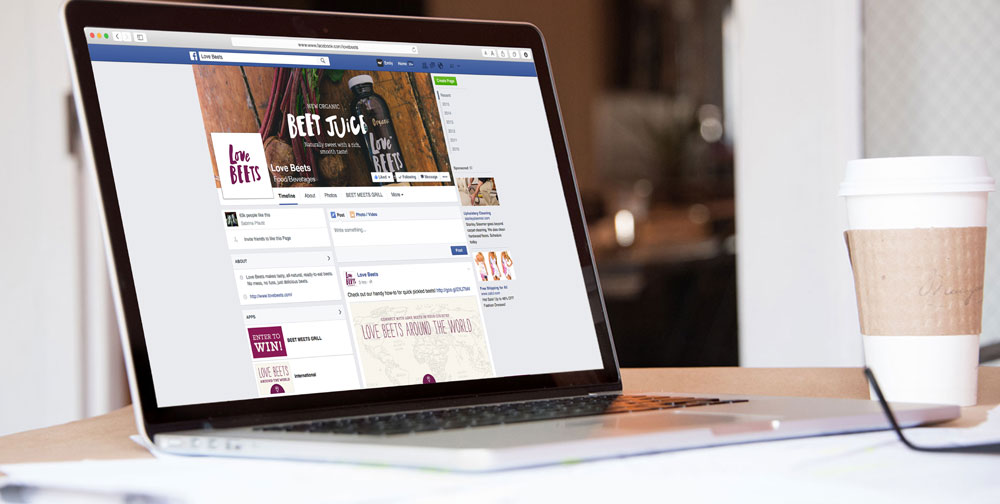February 4, 2016
Put Social Media Marketing Power to Work for Your Business

As social media has become a go-to resource for consumers and businesses alike, it seems like common sense to take advantage of this powerful marketing tool. In addition to selecting the right social media marketing platforms for your business, you’ll want to establish a comprehensive plan and make sure you’re actively interacting with your customer base. Remember, if you fail to plan, you plan to fail.

Social Media As An Important Sales Tool
The rise of social selling was apparent in 2015, so expect it to explode in 2016 and beyond. All of the main social channels are pushing their paid advertising solutions. While paid advertising is great, don’t overlook the numerous free options to gain visibility via social media.
It is paramount that you treat social media as a conversation tool. It is NOT simply a sounding board to announce your latest news item. You must post relevant, engaging content that facilitates a direct connection with your users. Whether you’re posting content as a thought leader or giving a glimpse into the company’s office environment, you’re humanizing your brand and providing yet another connection to your website, where users can go to learn more and enter your sales funnel.
You Can’t Just Be There. You Need To Engage.
In a social savvy world, it’s imperative you’re active and assure your social platforms are managed properly. It is not enough to simply have a Facebook business page, Twitter handle, Business LinkedIn profile or Instagram account. You need to engage your customers on a regular basis to attract and keep their attention.
It’s important to post content on a consistent basis to increase visibility and brand awareness, but at the end of the day, interactions are key. Just because you posted a photo or article on Facebook or LinkedIn, doesn’t mean your job is done. You need to monitor all activity on your social channels to answer questions, provide additional support and forge a real connection with your followers.
At the same time, it’s important to note that there may be negative comments. If you receive any negative comments it is extremely important to respond in a timely manner, offer apologies for the experience and offer to speak to the consumer. Negative comments can represent an opportunity for you to “make it right” as well as show other customers just how much you care. Win, win.
Depending on the size of your organization, you’re likely to have multiple team members and vendors contributing to your social channels. To provide a consistent experience for your followers, you’ll want to make sure all parties are communicating with a consistent voice that’s relevant and on-brand.
The Pros & Cons of Key Social Platforms
The idea of free marketing probably seems too good to be true. With each platform, there are definite pros and cons, depending on your social media strategy, as well as your overall marketing goals. The sheer number of social media platforms is often overwhelming, so to get your feet wet, you’ll want to focus on Facebook, Twitter, LinkedIn, and Instagram. While there are other decent options, these channels can serve as a core foundation for all future social media marketing efforts.
Perhaps the most widely-used social platform is Facebook. With a free business page that allows you to easily connect with your customers, it seems like an obvious choice. Taking it a step further the paid advertising is affordable, with a post boost for as low as $5. Through demographic targeting, you are able to communicate directly to your target market.
Through tagging, comments and messaging Facebook is a highly interactive and well-connected platform. Marketing on Facebook can have a “snowball effect” as posts can easily be shared across multiple users timelines. However, with interactivity comes a need for constant management and engagement.
Organic sharing is great, but Facebook’s paid advertising offerings can help you achieve additional visibility and engagement. While advertising costs are low, it’s important to note that your price can be outbid and your ad may only appear a few times over your advertising period, making it difficult to pinpoint whether you’re actually reaching your customers. If you’re planning on venturing into Facebook advertising, you’ll want to determine a budget to maximize both visibility and return on investment.
Facebook is an ideal platform for B2C companies looking to increase engagement with the customers. While Facebook can work for B2B companies, it lacks the specific purpose of LinkedIn.
Twitter’s aims to provide short bursts of communication that are easy to follow and share. If you’re committed to regularly sharing things to peak customer interest, you should consider creating a Twitter account. It has a range of uses and benefits for business and can complement other communication channels.
Twitter provides a chance to liven up your image. Tweeting gives your followers an opportunity to experience the personality of your brand and invites a more personal connection, as opposed to them just seeing it as a supplier of goods and services.
With a limit of 140 characters per post, Twitter is short and to the point. Twitter is ideal to keep your followers up-to-date with current information about your business. The interactivity is simple — by allowing users to favorite, retweet, and reply to your posts, it will result in additional reach and visibility.
At the same time, Twitter can be busy. It’s extremely easy for your tweets to disappear in the constant rolling feed. You’ll need to post multiple tweets per day to effectively reach your customers and cut through the noise. Utilizing specific Twitter handles (“@_____” ) and hashtags (#) to underscore the subject of your posts can also help visibility, as users can easily search for desired topics and entities to find relevant posts. You can stay on track by analyzing user trends to create a consistent posting schedule.
Data shows that images can have twice the engagement of a plain text tweet and therefore are highly recommended. However, be sure to use a variety of creative and relevant images (even well-framed mobile photos), as no one likes to see bland stock photos running in their feeds.
As with other social channels, it’s key to build an audience, or all your attempts will fall on deaf ears. To do this, begin by following your clients, relevant business and industry thought leaders. Twitter represents a great opportunity to learn from each other, as well as increase the visibility of your brand.
Twitter can prove useful for both B2B and B2C companies that need to communicate short bits of information to a wide audience in a timely manner.
LinkedIn is the go-to social media marketing platform for the business community. The obvious advantage of LinkedIn is that it allows access to your company and brand in a professional atmosphere. With millions of thought leaders contributing daily, LinkedIn is extremely rich in content.
One of LinkedIn’s major strengths as a marketing platform lies within its SEO capabilities. To give your SEO efforts a boost, ensure all employees are on LinkedIn and affiliated with your company page. You can take it one step further by optimizing your company’s page content with relevant keywords.
Of course, with the pros come the cons. LinkedIn’s free version is dependent on connections to help you make other connections. Building an audience requires extra effort, as it’s ultimately a closed network. Fortunately, LinkedIn offers paid services that make it easier to expand your reach. Although expensive, LinkedIn’s paid solutions can provide a decent ROI, as long as you’re willing to devote the time necessary to use the tools to grow your network and expand your reach.
When it comes to personal profiles, LinkedIn is a clear leader. Sure, the company page is nice but if your company operates in the B2B space it’s advisable to personally connect with colleagues, peers and even your competition to grow your personal LinkedIn network.
A common misconception about Instagram is that it’s only for those selling visual products. We have news for you. If you’re only posting your products then you’re doing it wrong. Instagram is a great platform to promote your company culture and humanize your brand. This level of engagement can make your brand more authentic, leading to increased trust amongst your customer base. Even better, Instagram currently ranks the highest in terms of social media engagement.
However, it’s not all good news for businesses. Instagram doesn’t allow the use of links within posts, making it the wrong platform to promote multiple pages. In addition, this platform is used primarily by the younger generation, so be mindful of your audience. Instagram hasn’t fully found its way into all industries yet, but it’s expected to over time (especially with the recent addition of short video posts).
When using Instagram as a marketing platform, carefully consider your content, keep your posts short, include a link within your bio and stay engaged by using hashtags and follow buttons.
In Conclusion
Being present isn’t the same as utilizing and being active on your social channels. Twitter pages with a tweet or two, a Facebook business profile with comments and no response and a LinkedIn company page without employee connections are all empty promises.
Regardless of platform, the more you put in, the more you’ll get out. Ensuring you have adequate resources to handle and nurture these platforms is important when building a network and it’s vital to maximize your ROI. Getting the ball rolling with social media marketing might seem slow and tedious, but once you’ve hit the ground running don’t slow down. Through social analytics, you can measure each network and adjust your strategy as needed.
One thing is for sure, social media isn’t going away anytime soon. On the contrary, what we see is only the start. Social media marketing is a relative newcomer to most companies promotional efforts. Even the best marketing agencies are just beginning to learn and understand the true potential of these powerful networking platforms.
What else goes into the recipe for successful digital marketing?
Check out step 5 of our Seven Steps to Digital Marketing Success series, covering Video Marketing for your Website.

